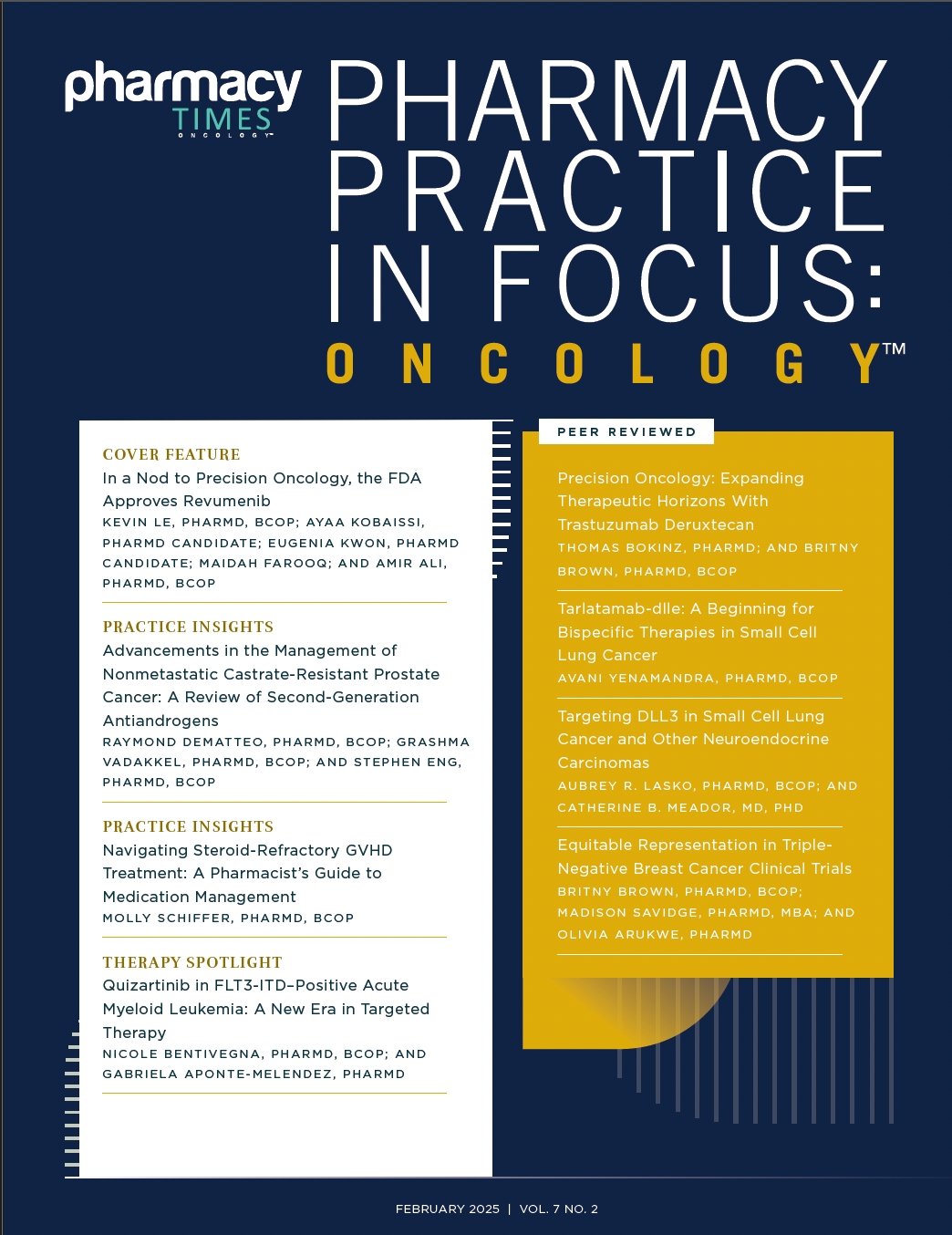As we embark on the new year, it is fitting to reflect on our progress in oncology and the challenges that remain. Among the most pressing issues in cancer care and research is the critical need for greater diversity in clinical trials. This is not merely an aspirational goal but an essential component of achieving equitable health care outcomes and advancing the science of oncology. Cancer does not affect all populations equally. Significant disparities exist in cancer incidence, progression, and treatment outcomes across different racial, ethnic, and socioeconomic groups. These disparities are often rooted in a complex interplay of genetic, environmental, and systemic factors. To address them effectively, we must ensure that the populations most impacted by cancer are adequately represented in clinical trials.
Historically, clinical trials have struggled with inclusivity. A 2020 analysis of US-based clinical trials revealed that only 8% of participants were Black, 6% were Asian, and 11% were Hispanic—despite these groups comprising approximately 13%, 6%, and 19% of the US population, respectively.1 This underrepresentation is even more stark in oncology trials, where the burden of cancer disproportionately affects some of these same groups.2 The result is a gap in our understanding of how treatments work across diverse populations, which can perpetuate disparities in care.2
The lack of diversity in clinical trials has far-reaching implications for the safety and efficacy of cancer treatments. Biological differences among populations can influence how drugs are metabolized, how tumors respond to therapies, and the likelihood of adverse effects. For example, genetic variations in drug-metabolizing enzymes such as CYP2D6 and CYP3A4 are more prevalent in certain racial and ethnic groups, potentially affecting the pharmacokinetics and pharmacodynamics of oncology drugs.3,4
About the Editor in Chief
Zahra Mahmoudjafari, PharmD, MBA, BCOP, FHOPA, is a clinical pharmacy manager in the Blood and Marrow Transplant Program in the Division of Hematologic Malignancies and Cellular Therapeutics at the University of Kansas Cancer Center in Kansas City, Kansas. Mahmoudjafari is a board-certified oncology pharmacist involved in several oncology-pharmacy organizations, such as the Hematology/Oncology Pharmacy Association (HOPA), currently serving as secretary on the HOPA board of directors. She has also been the chair or cochair of conferences such as Advanced Topics for Oncology Pharmacy Professionals and Oncology Pharmacists Connect. In 2022, she was the recipient of the American Society for Transplantation and Cellular Therapy Pharmacy Special Interest Group Lifetime Achievement Award and received the American Society of Clinical Oncology’s 40 Under 40 in Cancer Award.
Mahmoudjafari has presented nationally on her experience with managing high-cost therapies and on clinical topics such as cell and gene therapies, acute and chronic graft-vs-host disease, and the management of fungal infections in hematopoietic stem cell transplantation. Mahmoudjafari completed her pharmacy training at the University of Missouri-Kansas City (UMKC) and her PGY-1 pharmacy practice residency at The Ohio State University Wexner Medical Center. She completed her PGY-2 oncology residency at Huntsman Cancer Institute at the University of Utah and most recently received her MBA from Henry W. Bloch School of Management, which is affiliated with UMKC.
Without adequate representation of patient groups, these differences may go unrecognized, leading to less effective or harmful treatments for certain populations. Moreover, underrepresentation undermines the generalizability of clinical trial findings, making it difficult to develop guidelines that apply broadly to all patients. In an era of precision medicine, where treatments are increasingly tailored to individual genetic and molecular profiles, the importance of including diverse populations in research cannot be overstated.5
To increase diversity in clinical trials, we must first address the barriers preventing participation. These multifaceted barriers include mistrust, logistical challenges, and eligibility criteria.6
As pharmacists, we are uniquely positioned to champion the importance of diversity in clinical trials. Our profession sits at the intersection of patient care, research, and advocacy, giving us a broad perspective on the barriers to participation and the strategies needed to overcome them. By engaging directly with patients, we can demystify the clinical trial process, address concerns, and advocate for their inclusion.7
The responsibility to improve diversity in clinical trials does not rest on a single profession or institution. It requires a collective effort across the health care ecosystem. As we embark on a new year, I urge all members of the pharmacy community to consider how they can contribute to this critical work.
For those in direct patient care, this might mean discussing clinical trials with eligible patients and addressing their concerns.7 For those in research, it means designing studies with inclusivity in mind and collaborating with diverse communities from the outset.7 For pharmacy leaders and educators, it involves advocating for policies that promote equity and incorporating these principles into training programs.7,8
Looking ahead to 2025, we have an opportunity to make significant strides in this area. With advancements in telehealth and decentralized trial designs, we can reach patients in rural and underserved areas who were previously excluded from research. Innovative approaches to community engagement such as partnering with faith-based organizations or culturally specific advocacy groups, can also help bridge the gap.6-8
In closing, I want to thank you all for your dedication to the field of oncology pharmacy and the patients we serve. I hope this year is one of new beginnings, marked by progress, innovation, and a shared commitment to equity. Together, we can build a future where every patient—regardless of race, ethnicity, or socioeconomic status—has access to the best possible care and outcomes.
REFERENCES
1. Grant SR, Lin TA, Miller AB, et al. Racial and ethnic disparities among participants in US-based phase 3 randomized cancer clinical trials. JNCI Cancer Spectr. 2020;4(5):pkaa060. doi:10.1093/jncics/pkaa060
2. Unger JM, Vaidya R, Hershman DL, Minasian LM, Fleury ME. Systematic review and meta-analysis of the magnitude of structural, clinical, and physician and patient barriers to cancer clinical trial participation. J Natl Cancer Inst. 2019;111(3):245-255. doi:10.1093/jnci/djy221
3. Siegel RL, Miller KD, Fuchs HE, Jemal A. Cancer statistics, 2021. CA Cancer J Clin. 2021;71(1):7-33. doi:10.3322/caac.21654
4. The state of cancer disparities in the United States. American Cancer Society. Accessed January 22, 2025. https://www.cancer.org/research/acs-research-highlights/cancer-health-disparities-research/state-of-cancer-disparities-in-the-united-states.html
5. Hussain-Gambles M, Atkin K, Leese B. Why ethnic minority groups are under-represented in clinical trials: a review of the literature. Health Soc Care Community. 2004;12(5):382-388. doi:10.1111/j.1365-2524.2004.00507.x
6. Ford JG, Howerton MW, Lai GY, et al. Barriers to recruiting underrepresented populations to cancer clinical trials: a systematic review. Cancer. 2008;112(2):228-242. doi:10.1002/cncr.23157
7. ASHP Statement on the Role of Pharmacists in Primary Care. American Society of Health-System Pharmacists. Accessed January 22, 2025. https://www.ashp.org/-/media/assets/policy-guidelines/docs/statements/pharmacists-role-primary-care.ashx
8. Advocacy & awareness. Hematology/Oncology Pharmacy Association. Accessed January 22, 2025. https://www.hoparx.org/about-us/advocacy-awareness/







